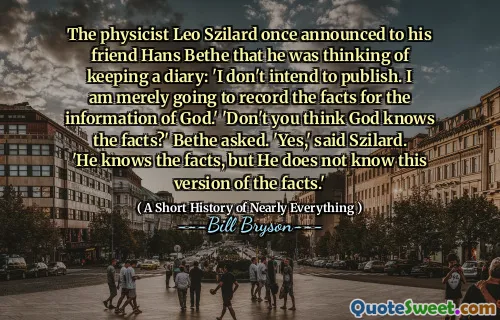{which state, very baldly, that a thing moves in the direction in which it is pushed; that it will keep moving in a straight line until some other force acts to slow or deflect it; and that every action has an opposite and equal reaction}
In "A Short History of Nearly Everything," Bill Bryson explores fundamental principles of physics and motion. He emphasizes Newton's laws, explaining that objects move in the direction they are pushed and continue on a straight path unless influenced by another force. This notion illustrates how motion is governed by predictable patterns in the universe.
Bryson also discusses the concept of action and reaction, noting that for every action, there is an equal and opposite reaction. This principle shapes our understanding of interactions in the physical world, providing a foundation for much of modern science and engineering. Through these laws, Bryson conveys the beauty and simplicity of the natural laws that govern our reality.






